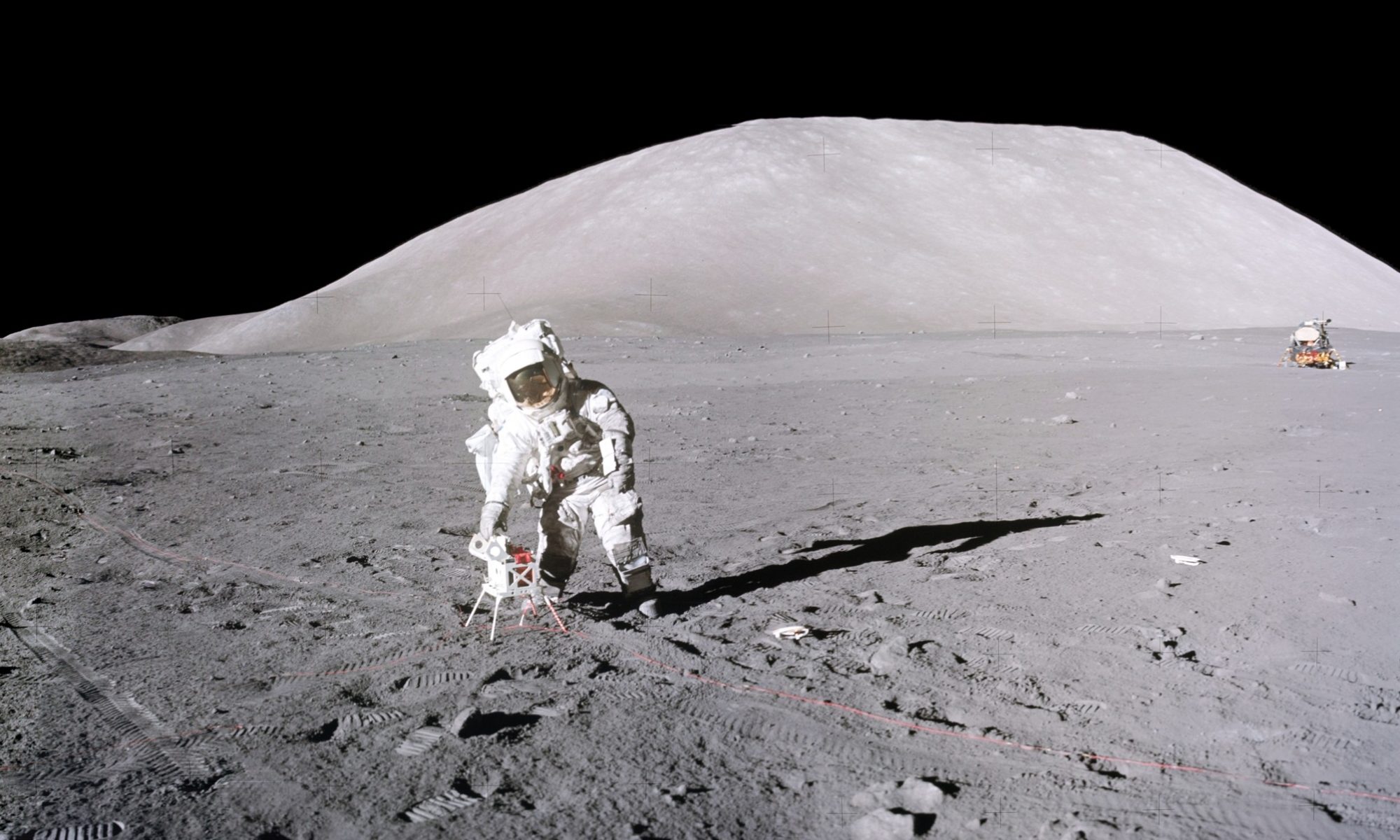 Alan in his art studio in Houston, TX. (From the Alan Bean Gallery).
Alan in his art studio in Houston, TX. (From the Alan Bean Gallery).
Alan LaVern Bean entered the Astronaut Corps in 1963 as a member of the third group of Apollo Astronauts. This good friend passed away on May 26, 2018, after a remarkable and eclectic life as an aeronautical engineer, Navy fighter pilot, test pilot, astronaut and artist. I have been honored to know Alan as a colleague and good friend for over 50 years.
My first close encounters with this famous Texan came in 1969 when, after the success of the Apollos 8, 9, 10 and 11 missions made it possible for us to work closely on preparations for the Apollo 12 mission to the Moon, launched on November 14, 1969.
 Alan in a training photo taken in front of a LM mock-up at Cape Canaveral on Sept. 22, 1969. (NASA photo AS12-S69-38859)
Alan in a training photo taken in front of a LM mock-up at Cape Canaveral on Sept. 22, 1969. (NASA photo AS12-S69-38859)
On the Apollo 12 mission, Alan would land on the lunar surface with his long-time friend and Navy comrade, Pete Conrad. Their geological training became a test bed for the more extensive, simulation-based training that would be adopted by future Apollo crews.
 Alan (right) with the Hand Tool Carrier and Pete Conrad (left) with the gnomon during geology training at the Cinder Lake crater field south of Sunset Crater, Arizona. Oct. 10, 1969. (NASA photo AS12-S69-55667).
Alan (right) with the Hand Tool Carrier and Pete Conrad (left) with the gnomon during geology training at the Cinder Lake crater field south of Sunset Crater, Arizona. Oct. 10, 1969. (NASA photo AS12-S69-55667).
In addition to the investigation of a site in the Moon’s Ocean of Storms, Alan and Pete demonstrated the pin-point landing capability that had been developed for post-Apollo 11 missions by piloting the Lunar Module Intrepid to within 150 m of the 1967 Surveyor III robotic spacecraft.
 Alan standing beside the Surveyor III spacecraft which landed ca. 2 years earlier. The LM can be seen in the distance at the edge of Surveyor Crater. (NASA photo AS12-48-7136).
Alan standing beside the Surveyor III spacecraft which landed ca. 2 years earlier. The LM can be seen in the distance at the edge of Surveyor Crater. (NASA photo AS12-48-7136).
While the late Dick Gordon in the Yankee Clipper collected photographic images from orbit for future landing missions, Alan and Pete deployed the first Apollo Lunar Science Experiment Package, including the first nuclear power source placed on the Moon. In addition, the samples they returned from the Ocean of Storms not only showed that volcanic eruptions there had occurred over 700 million years after those sampled by Neil Armstrong at the Apollo 11 site 1400 km to the east in the Sea of Tranquillity, but they also provided the first age date for a large lunar impact, namely, ~800 million years for the crater Copernicus some 400 km to the north.
Alan went on to Command the Skylab 3 mission of 59 days in Earth-orbit, flying with Owen Garriott and Jack Lousma.
This long-duration flight provided some of the most valuable evaluations of human adaptation to weightlessness.
Retirement from active duty as an astronaut gave Alan the opportunity to spend more time with the two major passions in his life – his wife, the beautiful and gracious Leslie, the love of his life, and his time in the studio with brush in hand. Alan’s prolific output of paintings, documenting spaceflight and displayed in museums, galleries, and homes throughout the world, has brought space and space history to life for millions.
I personally will miss Alan greatly, particularly his humor and the knowledge that came through in all of our many phone calls and direct interactions through the years. When that Texas accent came through over the line, I knew I was in for a special conversation.
